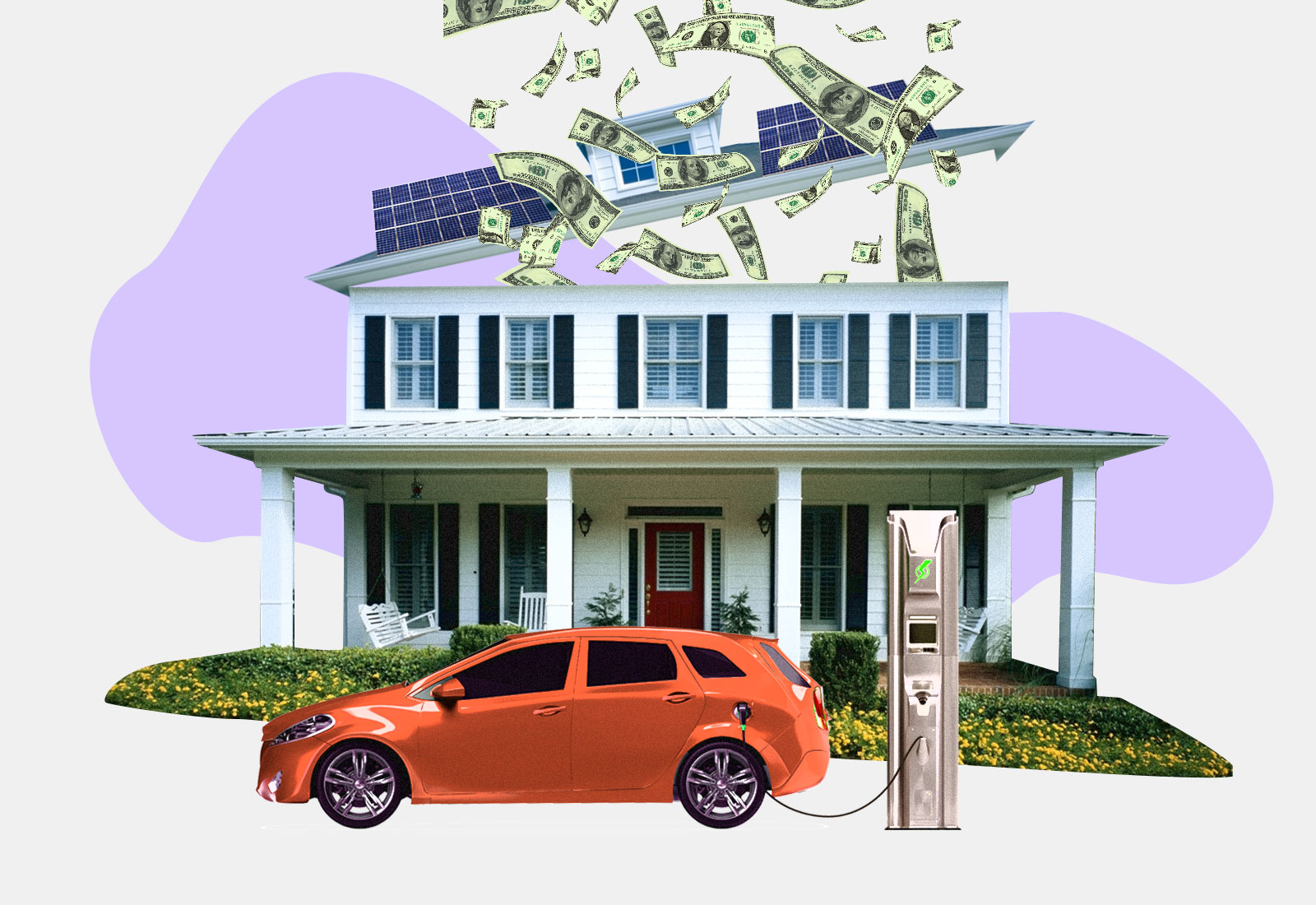If the Build Back Better Act, Democrats’ $2.2 trillion climate and social welfare bill, passes the Senate later this month, it will come with thousands of dollars in incentives and tax credits for electric cars, solar panels, heat pumps, e-bikes, and even electric motorcycles. A family could get up to $12,500 off an electric car; the federal government would also pay for up to 30 percent of a home installation of solar panels; and individuals who purchase e-bikes could get a credit of up to $900. More than ever before, taxpayers will be incentivized to adopt low-carbon lifestyles: eschewing gas-guzzlers for electric vehicles, putting in energy-efficient windows, or even installing miniature wind turbines on top of their homes.
But will people actually use that money? Researchers say that is the big question. Existing tax credits have significant drawbacks. For one, financial incentives alone are rarely enough to get consumers to go electric or give their homes a green upgrade while low-income households face particular hurdles: Many don’t make enough money to take advantage of the tax credits, or live in rented homes that can’t be easily upgraded.
“Clean energy tax credits overwhelmingly go to high-income households,” said Lucas Davis, a professor of business and economics at the University of California, Berkeley. According to a study by Davis and a co-author, the current batch of clean energy tax credits — which were started in 2006, with the Energy Policy Act, and expanded in President Barack Obama’s financial stimulus package — mostly went to the richest 20 percent of Americans. Between 2006 and 2012, the authors found, the top earners received about 60 percent of all the federal tax credits doled out for electric cars, solar panels, and retrofitting homes to save energy. For electric cars, the disparity was even more extreme: The top 20 percent of earners claimed 90 percent of the credits.

Davis argues that one of the major problems is that existing tax credits are “non-refundable.” That means that if Americans don’t owe enough in income tax, they can’t claim the full credit. In some cases, like with home solar panel installation, the credit will simply roll over to the following year, but in other cases, like with electric cars, some buyers will simply be out of luck: A taxpayer with less than $66,000 in income won’t make enough money to get the full credit.
That’s particularly pernicious given that low-income households often have to spend a much higher proportion of their wages on energy costs, sometimes up to three times more than their richer counterparts. Low-income households often are less energy-efficient, and have older heating and cooling systems that cost more to run. Odette Mucha, the mid-Atlantic regulatory director for the nonprofit organization Vote Solar, estimates that 40 million Americans who own their own homes — and so could install rooftop solar panels — don’t make enough in income to qualify for the current solar tax credit.
Some of these problems could be fixed if the Build Back Better Act passes in the Senate. In the bill’s current form, both the electric vehicle tax credit and the credit for solar panels and home efficiency improvements will be refundable. That means that households who don’t owe enough in taxes will simply get a check from the Internal Revenue Service for the remainder of the credit. For things like solar panels, there’s also a provision for “direct pay,” so that groups without any tax liability — schools, cities, or tribes — can also take advantage of the credit.
But there may be other hurdles as well. Holly Caggiano, a post-doctoral researcher at Princeton University, says research shows offering cash often doesn’t do enough to substantively change behavior. “You have all of these findings that are kind of surprising,” she said. “Experimental studies show that we offer people money and it actually doesn’t make a difference.”
In one study of households in India, for example, people who were offered cash for conserving energy paradoxically used more energy than those who were encouraged to conserve without a financial incentive. Other research has found that paying people to reduce energy use can be effective — but is slightly less effective than non-monetary strategies, like showing people how their energy use stacks up compared to their neighbors’.
It’s also difficult to estimate how effective tax credits are for boosting purchases of things like electric cars and solar panels. One study estimated that the EV credit was responsible for about 30 percent of electric car sales; others have estimated that it only contributed around 17 percent. Davis’s study on clean energy tax credits found that the solar panel credit coincided with a huge growth in residential solar installations — but that “we simply don’t know how much of this growth would have occurred absent the federal tax credit.”
Caggiano says that the best indicator for the success of the tax credits may be how they are rolled out at the community level. Studies show that people are more likely to buy electric vehicles if their neighbors have them while other research has demonstrated a similar effect for solar panels. If local community organizers and governments encourage the roll-out of the new technologies, these so-called “neighbor effects” may help Americans get on board.
How consumers are first introduced to the credits may make an impact as well. Caggiano notes that some Americans formed strong negative associations about “Obamacare,” but said they supported the Affordable Care Act. “The individual provisions in Build Back Better poll much higher than the overall package,” she said.
Ultimately, the tax credits are likely to increase demand for low-carbon technologies — but they will probably make the biggest impact among high-income taxpayers and those already tuned in to environmental issues. But to reach its zero emissions goal by 2050, the U.S. is going to need solar panels and EVs everywhere — not just in the hands of the wealthy.



